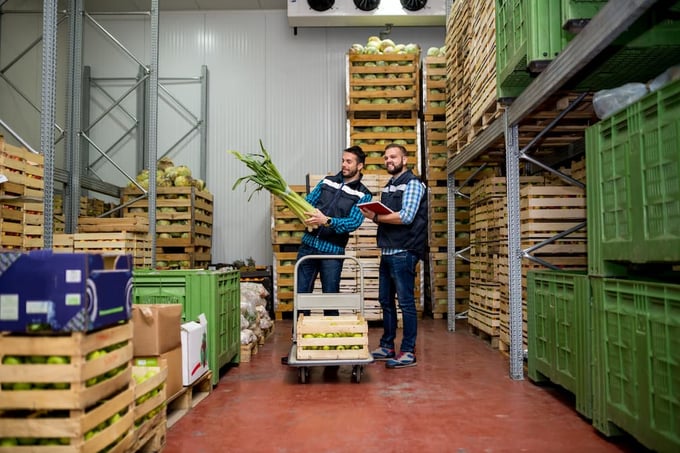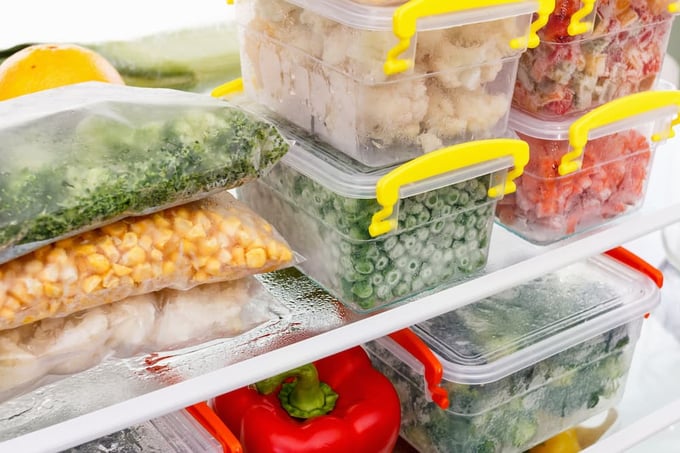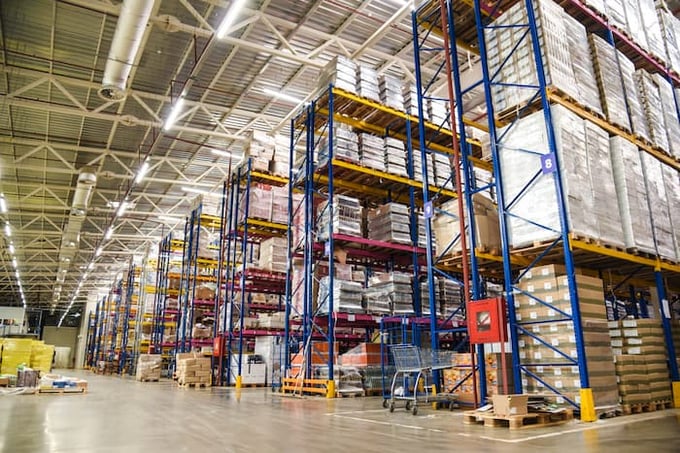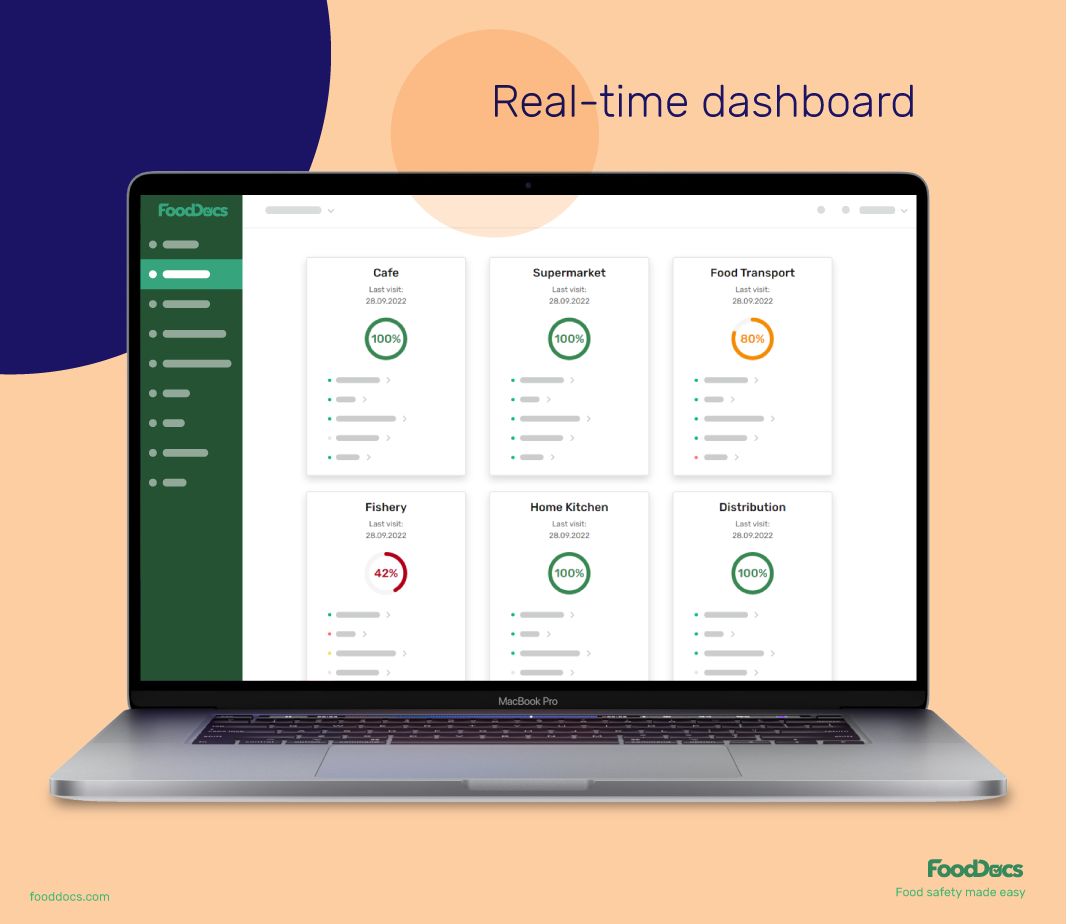Food storage is a standard operation for maintaining food safety for restaurants.
Food storage in restaurants is one of the most significant aspects of food safety. This operation allows food employees to hold food for an extended period without worrying about food spoilage. When correctly done, food businesses, such as restaurants, can optimize a food's safety and life expectancy while ensuring public safety.
Food handlers must be equally trained on the importance of appropriate restaurant food storage guidelines. When food handlers are properly trained and oriented with the significance of maintaining restaurant food storage, their appreciation and accountability over its maintenance is improved.
Key points covered:
-
Proper food storage is crucial for maintaining food safety in restaurants and protecting public health.
-
Food storage guidelines help restaurants optimize food safety and life expectancy while ensuring public safety.
-
Temperature control and cleanliness are the most important rules for effective food storage.
-
Cold storage, through refrigeration and freezing, effectively retains food freshness and prevents bacterial growth.
-
Dry storage requires low humidity and clean conditions to maintain the shelf life of shelf-stable foods.
-
Foods in a restaurant fridge should be stored based on their degree of cooking to prevent cross-contamination.
-
Labeling is essential in dry storage to manage restaurant inventory and ensure the use of food before it spoils.
-
Monitoring food storage conditions consistently ensures food preservation and safety.
-
Use FoodDocs' Food Safety Management Software to help monitor storage conditions effectively with the help of automated logs, checklists, and a smart notification system to enhance food safety management.
Food storage may sometimes be a tricky part of restaurant food safety. Some foods require low temperatures, and there are those that require high temperatures. More shelf-stable foods, such as canned and dried products, require less strict rules.
Proper food storage is a key food preservation technique that preserves both the quality and safety of foods. To ensure that the main objective of storage is realized, food handlers must always observe proper execution and monitoring.
What is the most important rule of restaurant food storage?
The two most important rules of restaurant food storage are maintaining a consistent temperature and a clean storage environment. Although food storage consists of several variables to control, cleanliness and temperature are two essential determinants of restaurant food safety.
Temperature is a huge factor in controlling food-related pathogens, such as harmful bacteria. Low temperatures and significantly high holding temperatures can stop the growth of pathogens and keep them fresh for a long time. Foods that normally stay fresh for 1-2 months can remain so for 6-12 months if stored in conditions such as in a freezer.
In addition, storage areas can only become effective if cleanliness is maintained. During food storage, contamination of foods can occur. Unknowing food handlers can use harmful foods during food preparations, harming customers. All aspects of food sanitation must be dutifully followed to prevent the production of hazardous foods.

What are the restaurant food storage guidelines?
Food storage guidelines consist of operations that help food businesses maintain safety and prevent hazards from contaminating foods and harming public health. These operations must be properly communicated with the food handlers in charge, as proper execution is key to ensure effectiveness.
Below are essential food safety guidelines for every restaurant business:
- Inspect foods before receiving and storage
- Constantly maintain and monitor storage temperature
- Handle high-risk foods with care
- Organize foods according to the required degree of cooking
- Separate ready-to-eat foods from raw food
- Always label foods with dates and identification
- Contain foods in airtight containers
- Avoid refreezing thawed food
- Maintain clean storage conditions
- Separate and label cleaning materials
- Never let food touch the ground
- Practice FIFO (First-in, First-out)
- Ensure that hot-held foods are cooked thoroughly
Each restaurant food storage guideline often applies to a particular section of your food business. In addition to proper orientation with food handlers, these guidelines must also be consistently monitored to ensure efficiency. Use our restaurant food storage chart to guide your food safety team regarding the proper conditions for storage.

What are the rules for storing cold food in a restaurant?
Low-temperature storage is perhaps the most effective food storage technique that can help retain fresh foods and prevent the unnecessary growth of bacteria. This type of storage can be performed through refrigeration and freezing. Both operations protect the food from pathogenic spoilage and any other biological changes in food.
To maintain the effectiveness of cold food storage, follow these 4 rules:
- Constantly maintain and monitor storage temperature. The main premise of cold food storage is maintaining a low temperature that will stop the growth of pathogens. As such, food handlers must consistently maintain low temperatures by using a properly calibrated kitchen thermometer and recording all monitoring readings.
- Handle high-risk or perishable foods with care. Low-temperature storage can only become effective if foods stored in the refrigerator are good quality. This means that the food must not have very high microbial content. High levels of contamination can spoil foods even at low temperatures.
- Organize foods according to the required degree of cooking. When storing foods inside a refrigerator, always follow the fridge storage chart. Ready-to-eat foods must be stored on the topmost shelf, whereas foods that require thorough cooking must be grouped on the lower shelves. This arrangement will help prevent ready-to-eat or cooked foods from getting contaminated with bacterial growth.
- Avoid refreezing thawed food. Refreezing previously thawed food can result in excessive-quality problems. Additionally, thawing may reintroduce bacteria that are more resistant to lower temperatures and may make the second round of freezing less effective.
Cold storage is one of the most useful operations in a restaurant. It can help your food service operators store large amounts of highly perishable foods and keep them fresh for a long time. The key to using low-temperature storage is to keep foods away from the temperature danger zone.
At the mentioned danger zone, dangerous bacteria and other pathogens optimally grow. When the temperature is significantly decreased, these pathogens are less likely to cause trouble, such as causing foodborne illness outbreaks.
What is dry storage in a restaurant?
Dry storage in a restaurant refers to the process of storing shelf-stable items in a dedicated area without the need to significantly control the environmental conditions. This type of storage normally only requires low humidity and a clean storage area to maintain the shelf life of foods.
Food products that are compatible with restaurant dry storage either have very low moisture or are enclosed in cans. Products such as rice, pasta, flour, and dried beans do not require cold storage because of their low moisture content, which provides them with stability. On the other hand, products such as canned vegetables or other canned goods normally have a very long shelf life because of their controlled internal conditions and hermetic sealing.

For dry storage, low humidity is important. Although foods stored in this condition are considered stable, if the humidity rises, some foods may reabsorb moisture and attract pathogens. This condition will inevitably spoil foods faster.
How to store food in a restaurant fridge?
Storing foods inside a restaurant fridge must be based on the required degree of cooking for each type of food.This means that foods that require the same amount of processing must be grouped on the same shelf.
Generally, ready-to-eat foods or cooked food products must be placed on the topmost shelf of the refrigerator. These types of food will no longer undergo extensive cooking. At most, they will be reheated or served cold. This fact means that contaminating this type of food will mean serving contaminated food products to consumers.
Below the first shelf, foods that require minimal processing, such as vegetables and fruits, must be neatly stored. Following this shelf, raw materials such as raw meat, poultry, and fish must be grouped and placed in airtight containers. It is important to put these types of foods in airtight containers to prevent food juices from dripping to the lower levels of the refrigerator.
At the bottom-most part of the refrigerator, foods that require extensive heating must be grouped. Foods that go on this shelf may include ground beef, casseroles, and leftovers.
Use our fridge food safety layout to guide your kitchen staff on how to store food in a restaurant fridge.
What food containers must be labeled in dry storage?
Stored foods require proper labeling, especially if they are not placed in their original containers. This will help prevent food service operators and cooks from using harmful foods that may already be past their expiration or use-by dates.
Food containers that must be labeled in dry storage must be clean, food grade, chemically inert, and must have well-fitting storage container lids. Additionally, foods wrapped in foils or resealable plastic food bags must be labeled accordingly. Food handlers must also use waterproof markers for labeling to ensure that labels will not be removed.
In addition to proper identification, labeling foods may help food handlers practice FIFO or the First-In, First-Out system. This system can help ensure that the foods served in your restaurant are fresh and keep customers safe.
How can you effectively monitor food storage temperatures and shelf-life dates?
All essential conditions of food storage must be part of every restaurant's food safety management system to ensure consistent monitoring. The problem is with many different aspects of food safety basics to monitor, food handlers may sometimes be confused.
Fortunately, FoodDocs is here to help you. We have a smart solution to monitor all of these conditions, and you will get an intuitive, digital food safety management system in the fastest way possible.
In just 15 minutes, we help you build a smart system powered by artificial intelligence and equipped with all of the necessary monitoring logs for food storage and other areas of your operations.
When you use our monitoring software, you can get the following benefits:
Automatically generated digital monitoring logs based on the most essential operations in your food service business. Some of the monitoring logs that you can get include the following:
- Fridge/Freezer Temperature Log


-
- All automatically generated monitoring logs and checklists come with detailed instructions on how to properly perform and monitor each food storage task. With this feature, you can ensure that food handlers will always accurately perform operations.
- You can also get a smart notification system that alerts food handlers whenever a task is due. Your team can rest easy that your food storage conditions will always be monitored and maintained on time.
Our digital Food Safety Management System does not only offer features that will help food handlers. Our system also focuses on improving food safety management aspects for food managers.
- Use our real-time dashboard that reflects an overview of your operations. Save at least 20% of your time supervising your team with this dashboard. Immediately identify areas that need attention for the timely application of corrective actions.


- Get unlimited storage space with the dedicated cloud storage that comes with our software.
The process of switching to our digital food safety platform is as easy as it can get. All you have to do is answer a few questions that will describe your operations to our system.
You can further customize all food safety documents that our system will generate for you to fit your operations more. With our system, improvements and compliance can be as easy as a few clicks.
Want to experience all of the mentioned benefits for free? You can use our free 14-day trial.
